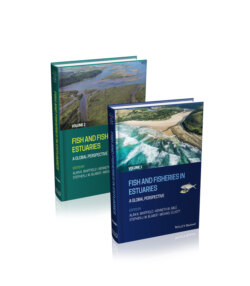Читать книгу Fish and Fisheries in Estuaries - Группа авторов - Страница 42
3.2.2.1 Habitat and water quality
ОглавлениеTemperature, precipitation and associated freshwater flow are factors frequently identified as exercising control over reproductive and recruitment success in estuarine fishes. Effects are notably prominent on reproductive success of anadromous fishes such as the moronid Morone saxatilis, mugilids, anguillids, alosine species and salmonids (Crecco & Savoy 1984, Blaber 1987, Martino & Houde 2010, 2012, Kettle et al. 2011, Quinn 2018). In a more specific example, the influence of freshwater flow resulting from precipitation is especially evident for ingress of the glass‐eel stage of the catadromous Anguilla rostrata (Sullivan et al. 2006) and Anguilla mossambica (Bruton et al. 1987). Reduced freshwater flow during droughts can diminish the size and extent of estuarine plumes onto the continental shelf and the resulting cues to estuarine ingress of larvae from offshore (Baptista et al. 2010). Low freshwater flows also can reduce the availability and extent of suitable nursery areas within small estuaries, thus reducing abundance of marine fishes that recruit, for example, to South African estuaries (Whitfield & Harrison 2003). Some droughts can induce fish kills in estuaries, likely due to synergistic effects of hypoxia and resulting decline in food availability (Wetz et al. 2011), or increasing hypersalinity as a result of evaporation (Whitfield et al. 2006). In a comparison of two Australian estuaries with differing freshwater discharge, the estuary with higher discharge, and higher dissolved oxygen levels, had higher survival of eggs and larvae of the sparid Acanthopagrus butcheri (Nicholson et al. 2008). Certainly, low temperatures during the winter in temperate estuaries can negatively influence recruitment of the sciaenid Micropogonias undulatus (Hare & Able 2007, Hare et al. 2010). Sudden decreases in water temperature (<14 °C) also cause mortalities in tropical estuaries (Kyle 1989, Cyrus & McLean 1996). In postflexion larvae of the Baltic clupeid Clupea harengus, increases in summer temperatures on nursery grounds to above the physiological optimum negatively affect survival (Arula et al. 2016). Diel variation in hypoxia (<2 mg L−1 dissolved oxygen) may negatively influence reproductive condition, e.g. gonadosomatic index and egg production in Fundulus grandis (Cheek 2011).
Long‐term patterns in recruitment and reproductive success, particularly declines, may be driven by deterioration of estuarine habitat and water quality from human causes (see Section 3.5). Many recruitment patterns of fishes in estuaries heavily utilised by humans actually are long‐term trends of reproductive failures and declines, and some may prove to be ‘one‐way trips’ as human influences on estuaries continue to escalate (e.g. alosines, the endangered osmerid Hypomesus transpacificus, anguillids).
